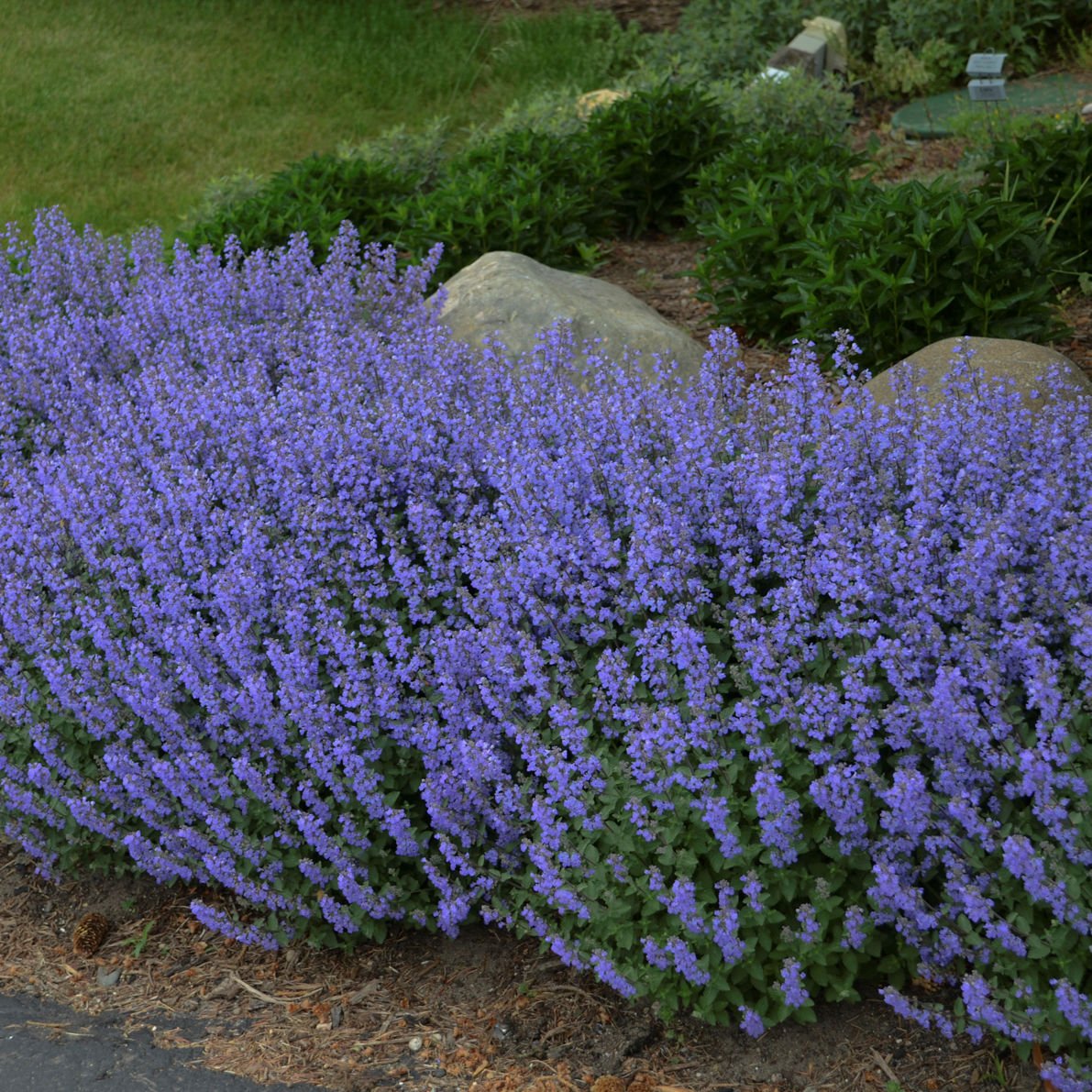

You can start seeds indoors four to eight weeks before the last frost. Nepeta plants grow and spread easily, and are very easy to propagate in a number of different ways. An easy garden plant which rewards year after year, drought tolerant and requires minimal maintenance.Plants also contain a compound called nepetalactone, a volatile oil that provokes a neurological response in cats, causing them to go temporarily nuts. The intensity of the blue fades after flowering and its worth shearing off the dead heads as it will often throw up some new flower shoots. So later in the season you can cut back the old foliage, let the new growth through and this may also produce a small late flush of flowers, if the summer is good. You can also cut back Nepeta after flowering, and when doing so, if you look carefully at the plant you will see newer growth which foliage has a fresh look contrasted against the tired older foliage. This will delay flowering slightly and make for a more compact shrub. In late May or early June, depending on the spring, cut catmint back by about a third. To avoid this, you can either stake the plant, or as Catmint responds well to the Chelsea Chop, reduce its size earlier in the year. Many varieties of Nepeta, especially the larger species such as Nepeta faassenii 'Six Hills Giant', can sprawl and can go thin in the middle. If you like cats, you may just want to sit by and watch them go bonkers for the cat mint, making a beeline for it and rolling about. If you are not a cat lover and don't want sections of your plant rolled on, insert a few sticks, which will be concealed by the plant growth but serve to deter cats from taking a roll in the Nepeta. Apart from bees, as its name suggests, it is attractive to who love it.

It is a plant which thrives in almost any conditions and does not need feeding, which can make it leggy. Walk past a clump on a warm day and it will be buzzing with the sound of bees. It has the bonus of being very attractive to bees and pollinators. Once planted Nepeta is really easy to establish. It is also long flowering and, if but back, will sometimes produce a second flush of flowers. The only conditions it will resent is really boggy ground. It is very tough and is almost a grow anywhere plant. Catmint will grow in sun or partial shade and in both moist and dry soils.
/Little-Titch-catmint-big-56a587095f9b58b7d0dd44bd.jpg)
Nepeta is native to a number of habitats and so is less fussy where it grows. It needs to be dry, in well-drained soil and sunny contrast Catmint which will grow almost anywhere. Lavender will struggle on heavier wet ground as a Mediterranean plant. The fact that Nepeta is tolerant of most growing conditions, including partial shade, dry and drought areas, means it is useful for more difficult spots in the garden.Ĭat mint will tolerate wetter conditions where Lavender will not to thrive, Lavender requires much drier conditions than Catmint, especially over winter. Catmint produces clouds of soft blue and mauve in a garden and is a viable alternative to Lavender where the growing conditions are not suitable for Lavender. Nepeta is a reliable perennial, very hardy and tolerant of all conditions and it returns reliably each year.


 0 kommentar(er)
0 kommentar(er)
